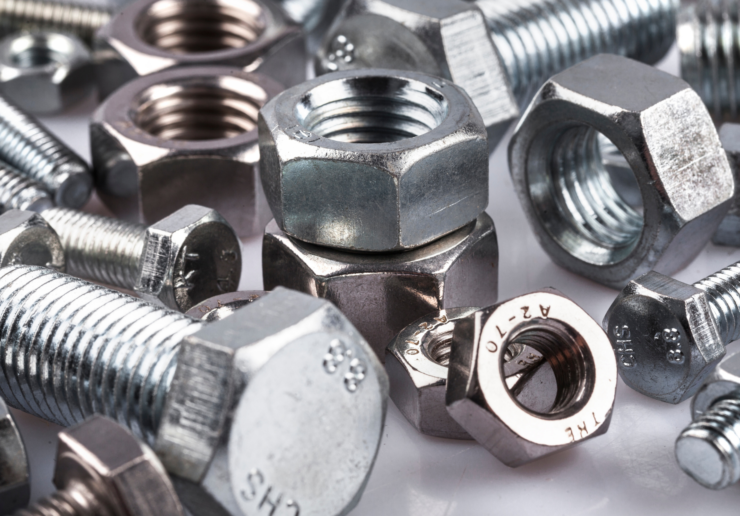4140 steel is a chromium, molybdenum, manganese low alloy steel plate that is known for its toughness, high fatigue strength, and high torsional strength.

It is a low alloy steel plate that is used in many different industries.
4140 steel plate has high fatigue strength, excellent toughness, and good corrosion resistance. One disadvantage is the extra care that must be taken when welding it.
This grade is used in the aerospace, oil and gas, and many other industries.
This material is often used for shafts, crankshafts, gears, collars, and machinery parts because of its toughness, abrasion and impact resistance, and high fatigue strength.
It possesses good machinability in the annealed condition.
It is weldable by all conventional methods but requires preheating beforehand.
It is hardened by heating to 1550°F or 845°C followed by quenching in oil.
4140 steel plate has high fatigue strength, excellent toughness, and good corrosion resistance. One disadvantage is the extra care that must be taken when welding it.
This grade is used in the aerospace, oil and gas, and many other industries.
This material is often used for shafts, crankshafts, gears, collars, and machinery parts because of its toughness, abrasion and impact resistance, and high fatigue strength.
It possesses good machinability in the annealed condition.
It is weldable by all conventional methods but requires preheating beforehand.
It is hardened by heating to 1550°F or 845°C followed by quenching in oil.
ANSWER:
It is considered a low alloy or carbon steel. With the addition of chromium and molybdenum, it is one of the most common alloy steels. The chromium boosts corrosion resistance and the molybdenum boosts toughness.
ANSWER:
This steel plate has excellent resistance to corrosion compared to other types of steel because of its higher percentage of chromium and molybdenum. However, once the corrosion process has started, it will rust just like most steel that has undergone the same damage.
ANSWER:
It can be welded but requires preheating beforehand because it is more crack sensitive.
ANSWER:
The addition of chromium and molybdenum are why it is considered a “chromoly” steel.
ANSWER:
The first “4” is 4140 indicates that the steel contains molybdenum at higher levels than other steels like the 1xxx series.
The “1” in 4140 indicates the addition of chromium at higher levels than 46xx steels.
The “40” differentiates this steel from other 41xx series steels.
ANSWER:
It is considered a low alloy or carbon steel. With the addition of chromium and molybdenum, it is one of the most common alloy steels. The chromium boosts corrosion resistance and the molybdenum boosts toughness.
ANSWER:
This steel plate has excellent resistance to corrosion compared to other types of steel because of its higher percentage of chromium and molybdenum. However, once the corrosion process has started, it will rust just like most steel that has undergone the same damage.
ANSWER:
It can be welded but requires preheating beforehand because it is more crack sensitive.
ANSWER:
The addition of chromium and molybdenum are why it is considered a “chromoly” steel.
ANSWER:
The first “4” is 4140 indicates that the steel contains molybdenum at higher levels than other steels like the 1xxx series.
The “1” in 4140 indicates the addition of chromium at higher levels than 46xx steels.
The “40” differentiates this steel from other 41xx series steels.
Steel base plates are fundamental elements employed in various manufacturing processes. These flat, rectangular...
Metal fabrication is a critical process that transforms raw metal materials into finished products....
The solar industry has undergone a significant transformation by incorporating steel products into various...
The unprecedented pace of solar growth is challenging and reforming America’s construction and engineering...
If you’ve got a roof over your head, it’s partly thanks to purlins. A...
Acquiring highly profitable company with annual sales of around USD 30 million Significant expansion...
A stainless steel depot is a specialized facility or supplier that stocks and provides...
American manufacturers use about 28.2 billion pounds of aluminum every year, 41.6% of it...
Leading steel distributor expands commitment to sustainability in the North American market. Kloeckner Metals,...
At Kloeckner, we are excited to announce that our Santa Fe Springs, CA location...

X
The Kloeckner Metals website uses modern technologies. Unfortunately, your browser doesn't support those technologies.
Download the latest version of one of these browsers to experience the site: